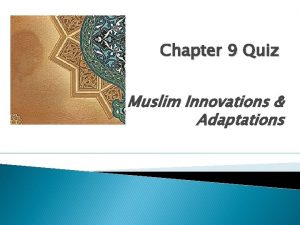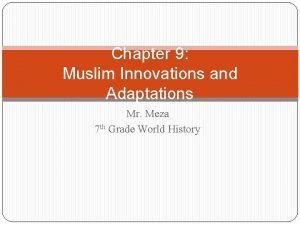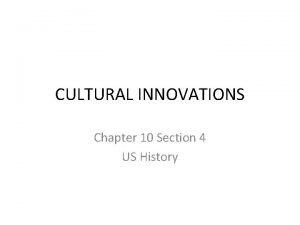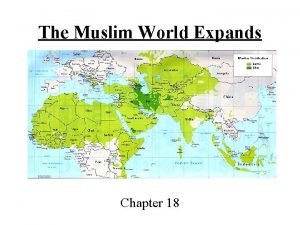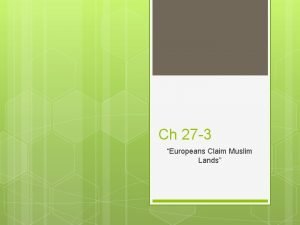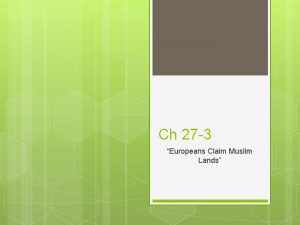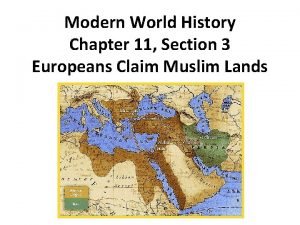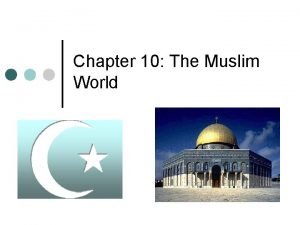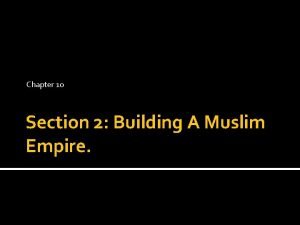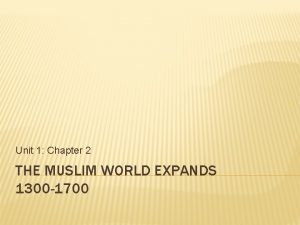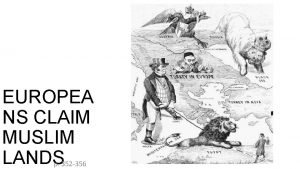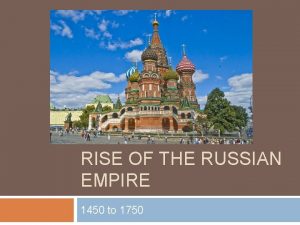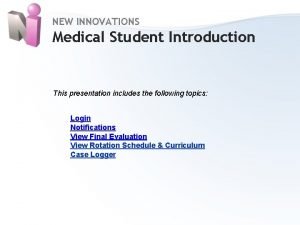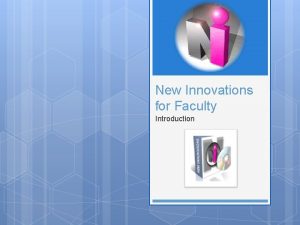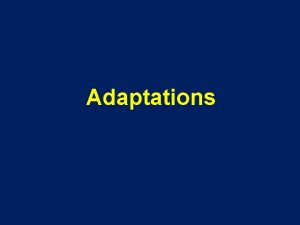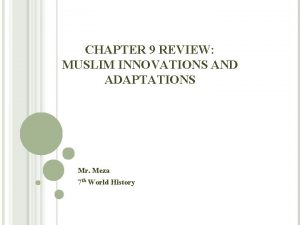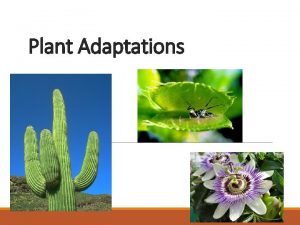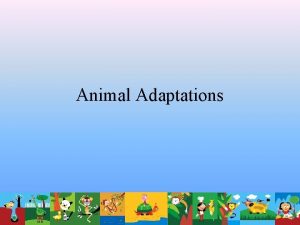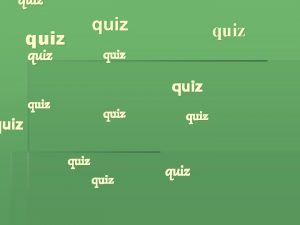Chapter 9 Quiz Muslim Innovations Adaptations 1 The














- Slides: 14

Chapter 9 Quiz Muslim Innovations & Adaptations

1. The spreading of ideas and ways of life is called cultural A. Adaptation B. Diffusion C. Innovation D. Evolution

2. Why were the Islamic lands ideally suited for spreading cultural elements to other places? � A. All people there spoke English, so they could share ideas with people from Asia, Europe, and Africa. � B. Many important trade routes linking Asia, Europe, and Africa met in the Middle East. � C. The isolated location of the Islamic lands protected them from outside influences. � D. Muslim people were always on the move and never established permanent settlements.

3. Which navigational instruments did Muslims adapt and perfect? A. the octant and the sextant B. the compass and the astrolabe C. the chronometer and the ring dial D. the sounding line and the back staff

4. The Muslims' great experience with trade helped advance their knowledge of A. history. B. agriculture. C. psychology. D. geography.

5. Muslims learned a new way to write numbers from A. Spanish traders. B. Indian scholars. C. ancient Greek mathematicians. D. Egyptian holy men.

6. How did Muslims provide medical care to people living in remote villages? A. People had to travel to hospitals in major cities to seek medical care. B. Doctors agreed to spend one year out of every seven years in remote villages. C. Hospital caravans went to the villages to bring them medical care. D. Villagers had very little medical care, apart from what they could provide to each other.

7. The Muslims learned how to make paper from the Chinese. What is one consequence of this discovery? �A. the growth of Muslim literature �B. the development of Muslim weaponry �C. the flourishing of Muslim architecture �D. the expansion of Muslim empires

8. Why did Muslims reject the use of images of humans or animals in their visual art? A. They did not have the artistic skills to represent living creatures. B. They believed that only God could create something that is alive. C. They thought that humans and animals were too ordinary to be represented in art. D. They believed that realistic images of people or animals in art would steal their souls.

9. Why did Muslims honor calligraphers above all other artists? A. Muslim leaders were all trained calligraphers and gave other calligraphers a high social standing. B. Calligraphers had more extensive training than any other artists in the Muslim world. C. Muslims believed only calligraphy was worthy to record the words of God. D. Calligraphers were the only Muslims who knew how to read and write.

10. Why was polo a popular sport among wealthy Muslims? A. Polo is played in the water, and wealthy Muslims had swimming pools on their estates. B. Polo is an intellectual sport, and only wealthy Muslims could afford the education needed to play. C. Polo is played on horseback, and wealthy Muslims saw horses as status symbols. D. Polo is an Indian sport, and only wealthy Muslims had the money to travel to India.

11. Which is the best example of cultural diffusion? • A. Muslim architects built mosques with minarets. • B. Muslims face toward Makkah when they pray. • C. Muslim cities along major trade routes grew wealthy. • D. Muslims spread the Chinese craft of paper making to Europe.

12. Chess was probably invented in India. Muslims learned the game and improved it. Which word best describes this process? A. B. C. D. A. evolution B. promotion C. adaptation D. innovation

13. Which of these might you see in a work of Islamic art? �A. thirsty camels �B. herds of goats �C. flowering vines �D. smiling children
 Muslims learned a new way to write numbers from
Muslims learned a new way to write numbers from Muslim innovations and adaptations
Muslim innovations and adaptations Chapter 8 lesson 4 cultural innovations
Chapter 8 lesson 4 cultural innovations Chapter 18 the muslim world expands
Chapter 18 the muslim world expands Chapter 27 section 3 european claim muslim lands
Chapter 27 section 3 european claim muslim lands Chapter 27 section 3 european claim muslim lands
Chapter 27 section 3 european claim muslim lands Chapter 11 section 3 european claim muslim lands
Chapter 11 section 3 european claim muslim lands Chapter 10 the muslim world
Chapter 10 the muslim world Chapter 10 section 2 building a muslim empire
Chapter 10 section 2 building a muslim empire The muslim world expands
The muslim world expands Chapter 27 section 3 european claim muslim lands
Chapter 27 section 3 european claim muslim lands Russian empire 1450-1750
Russian empire 1450-1750 New innovations login
New innovations login New innovations lsuhsc
New innovations lsuhsc Lucent technologies bell labs
Lucent technologies bell labs
